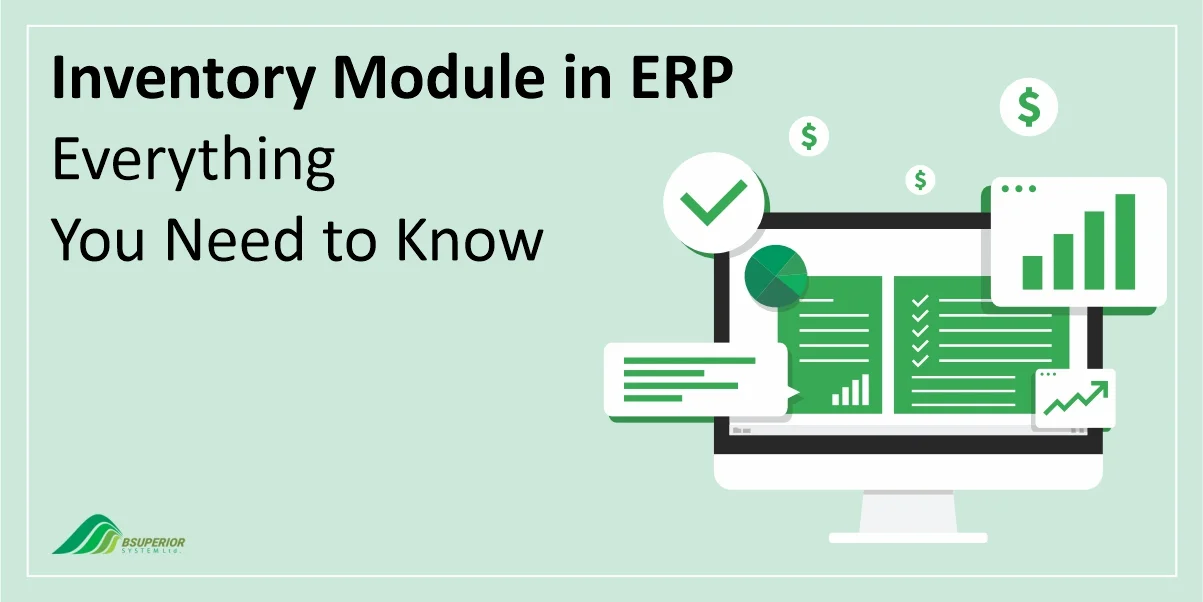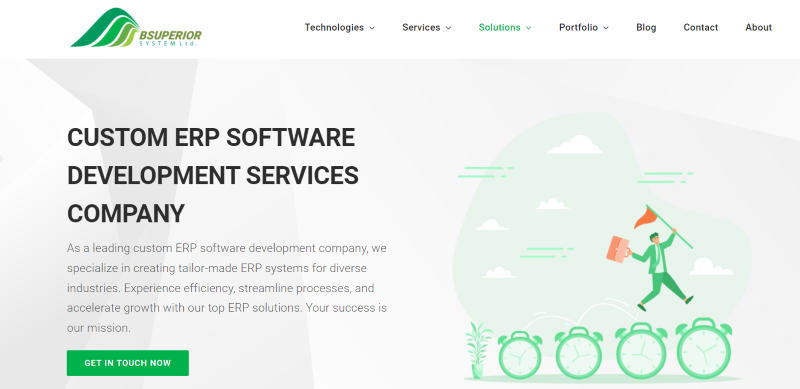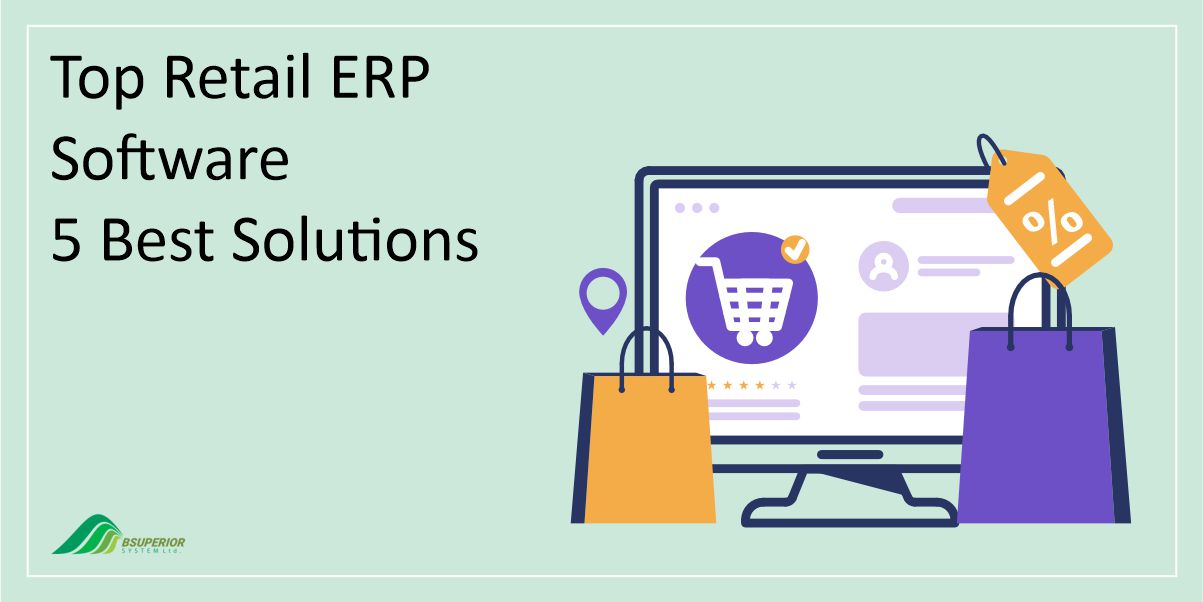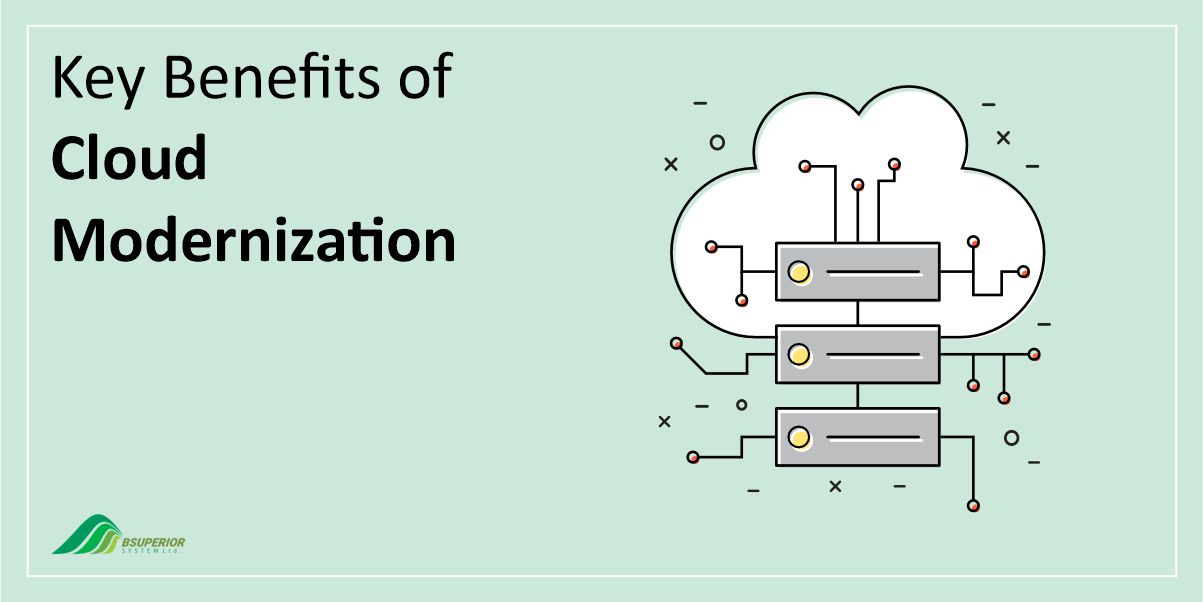Inventory Module in ERP: Everything You Need to Know

Table Of Content
Whether you depend on external partners or your own team for deliveries, your brand ultimately shoulders the responsibility of timely deliveries.
Fortunately, optimizing your inventory through an ERP inventory management system can significantly impact your business.
In the following sections, we’ll delve deeper into the specific features of ERP inventory modules and their impact on your delivery processes and overall business success.
ERP Inventory Management in a Nutshell
An ERP inventory management is a single command center for everything your business does, with your inventory at the heart of it. It’s like a unified brain for your entire operation, tracking stock, finances, planning, and logistics all in real-time.
This is especially useful for companies that are growing, have intricate processes, or want to optimize their inventory levels.
Whether you’re aiming for just-in-time efficiency, managing a large variety of products, or simply want to squeeze the most out of your stock, ERP can help you achieve it.
Read more: What is ERP Finance Module? Key Features and Benefits
ERP Inventory Management: Core Functions
ERP inventory management systems offer several functionalities to streamline business operations and improve efficiency. These functions include:
- Process Simplification: The system automates key tasks like inventory checks, ordering, and more, saving time and reducing costs. This allows for informed decision-making and smoother process flow.
- Quality Management: An ERP inventory tracks and identifies potential issues in the warehouse, such as delayed shipments or damaged goods. It also analyzes data to provide insights into factors affecting product quality.
- Automated Reporting: It automatically generates reports based on real-time data, including low-stock alerts, inventory confirmations, and demand forecasts.
- Inventory Optimization: It monitors inventory levels and triggers automatic re-orders when stock is low. Additionally, it forecasts product demand to minimize overstocking and wasted resources.
- Serial Number Tracking: An ERP inventory management system can manage and track an unlimited number of serial numbers for products, offering complete control from intake to delivery.
- Comprehensive Automation: The software automates various warehouse-related tasks, including order management, list management, and shipping management.
ERP Inventory Management System: How it Benefits Your Business
Implementing an ERP inventory management system will provide your business with several essential benefits. These are:
Boosting Customer Satisfaction
ERP inventory management plays a crucial role in enhancing customer service. By optimizing inventory levels, the system ensures you have the right products available to fulfill orders.
This eliminates stockouts and prevents customers from being disappointed by unavailable items. Additionally, efficient stock management avoids overstocking, which ties up capital and can lead to product obsolescence.
Transparency Across the Supply Chain
Imagine real-time visibility into your entire supply chain, from warehouses and stores to goods in transit. That’s what ERP provides. It tracks and updates every inventory transaction, giving you a clear picture of your stock at any given moment.
This transparency allows for proactive planning, better decision-making, and improved supplier relationships.
Accurate Financial Reporting
Inventory often represents a significant chunk of a business’s capital. Therefore, accurate inventory data is vital for financial reporting, which impacts everything from revenue forecasting to tax returns.
Incorrect data can lead to serious problems down the line. ERP ensures accurate and up-to-date inventory records, automatically generating detailed reports that facilitate sound financial decisions.
Scalability For Future Growth
As your eCommerce business expands, enters new markets, or diversifies its product line, you need a system that can grow with you. ERP inventory management software caters to this need.
It scales seamlessly to accommodate your evolving requirements, eliminating the need for costly system upgrades and ensuring your operations remain smooth even as your business flourishes.
Data-Driven Decision Making and Beyond
The benefits go beyond the basics. The system empowers you to analyze key inventory metrics, providing valuable insights to optimize your inventory management strategies.
This data-driven approach helps you make informed decisions about everything from purchasing to promotions, ultimately leading to a more efficient and profitable business.
Read more: 6 Best ERP For Supply Chain Management in 2024
What to Look For in an ERP Inventory Management Tool
Finding the perfect inventory management system isn’t a one-size-fits-all endeavor. Retailers need to carefully consider specific features and functionalities to ensure a successful implementation.
Here are several key factors to take into account during your search:
1. Budget and Accessibility
- Cost: Prioritize solutions within your budget. Explore subscription-based models for flexibility and avoid exceeding financial limitations.
- User Interface: Opt for a user-friendly interface that fosters intuitive navigation and adoption by your team. Cloud-based solutions offer greater accessibility and remote management capabilities.
2. Support and Automation
- Support: Make sure that the vendor provides adequate support options, including training, troubleshooting, and ongoing assistance, to address potential issues efficiently.
- Automation: Look for a system that automates key tasks like inventory management, warehousing, and order management to streamline operations and reduce manual errors.
3. Multi-Channel Inventory Management
- Centralized Data: Look for software that offers centralized data across all sales channels and warehouse locations, providing comprehensive inventory insights and eliminating time-consuming data gathering.
- Inventory Forecasting: Seek a solution that uses real-time data for accurate demand forecasting.
- Customer Experience: Prioritize solutions that enhance customer experience by facilitating omnichannel shopping.
4. Warehousing and Stock Tracking
- Warehouse Design: Consider the inclusion of warehouse design features that guide optimal product organization and placement for faster order fulfillment.
- Picking and Packing: Ensure efficient picking and packing processes to streamline product retrieval and shipment preparation.
- Receiving and Putaway: Opt for a system that facilitates seamless receiving of new inventory and proper storage within the warehouse.
5. Invoice and Purchase Order Management
- Integrated Invoicing: Look for a system that automatically generates invoices upon order placement.
- POS Integration: Ensure smooth integration with your point-of-sale system for automatic order updates and warehouse communication.
- Streamlined Process: Choose a system that streamlines the entire purchase order management process, from initial customer order to final invoice payment.
Boost Your Inventory Management with These ERP Best Practices
Now that you’ve seen how ERP can transform your inventory control, let’s dive into practical strategies for leveraging it effectively. Here are key practices to optimize your inventory management within an ERP system:
1. Bundle Products to Boost Value
Increase average order value by creating product bundles, combining multiple items into a single unit. Modern ERP systems automatically track individual items within each bundle, offering several advantages:
- Improved stock tracking and management
- Reduced deadstock by selling less-popular items
- Higher average order values
- Lower holding and shipping costs
- Enhanced customer convenience and flexibility
To start, define bundle sizes, select products, and utilize real-time tracking to maintain sufficient stock for each variant.
2. Measure Performance with KPIs
Establish key performance indicators (KPIs) to track inventory performance over time. These provide clear benchmarks for improvement across various periods. Useful KPIs include:
- Inventory carrying costs
- Inventory turnover rate
- Inventory write-offs and write-downs
- Cycle time
- Order status and tracking
Modern ERPs can display KPIs in easy-to-read charts and graphs for quick analysis.
3. Prioritize Inventory with ABC Analysis
As a manufacturer, maximizing inventory turnover is crucial. ABC analysis helps prioritize your inventory by classifying items based on their importance:
- A: High value, low volume (e.g., premium products)
- B: Moderate value, moderate volume (e.g., core products)
- C: Low value, high volume (e.g., consumables)
Benefits are:
- Improved demand forecasting
- Enhanced time management and resource allocation
- Increased inventory accuracy
- Strategic pricing support
However, consider potential drawbacks like ignoring trending products or conflicting with existing strategies. This approach requires time and resources, so weigh its benefits against your specific business context.
Read more: ERP in Supply Chain Management: Use Cases and Benefits
4. Enhance Accuracy with Cycle Counting
Regular cycle counting verifies your physical inventory against system records. It involves counting smaller portions of inventory regularly instead of a full stocktake. This ensures accuracy and helps identify discrepancies. Benefits include:
- Reduced safety stock needs
- Faster and more cost-effective than full stocktakes
- Minimal disruption to operations
- Lower inventory holding costs
- Potential anti-theft benefits
5. Optimize Inventory Turnover for Efficiency
Inventory turnover measures how often you sell or use your inventory within a specific period. A higher turnover rate indicates better sales performance. Your ERP system should calculate this metric to provide insights into:
- Product demand
- Obsolete stock levels
- Inventory adjustments needed
Here are ways to increase your inventory turnover rate:
- Experiment with pricing strategies.
- Liquidate slow-moving or obsolete stock.
- Improve demand forecasting accuracy.
- Redistribute inventory to optimize stock levels across locations.
By implementing these best practices and taking advantage of your ERP system effectively, you can achieve significant improvements in your inventory management that will lead to increased efficiency, profitability, and customer satisfaction.
Unify Your Inventory Management with BSUPERIOR
Effective inventory management is a cornerstone of any successful manufacturing operation. Yet, juggling multiple software systems can be cumbersome and inefficient.

BSUPERIOR offers a powerful alternative: a custom-built ERP solution designed to seamlessly integrate your inventory management processes and deliver measurable results.
As a leading developer of custom ERP software, BSUPERIOR caters to diverse industries, crafting tailored solutions that unlock efficiency, streamline workflows, and accelerate your growth. We believe in partnering with you to achieve your unique business goals.
Modernize your operations and unlock the full potential of ERP development. Our comprehensive services cover a wide range of modules, specifically designed to address your individual needs.
We understand the value of customization, and our solutions offer the flexibility to perfectly align with your unique business landscape.
Our dedicated Inventory Management Module empowers you with comprehensive tracking and management of your inventory levels, including stock control, reorder points, and more.
So, schedule a consultation with our expert team to discuss your specific inventory management needs and explore how a custom ERP solution can empower your business success.
Final Words
Unlocking the power of efficient inventory management is no longer a dream. With the right tools and strategies, you can transform your delivery processes, boost customer satisfaction, and ultimately drive your business forward.
This blog post has explored the extensive capabilities of ERP inventory management systems, delving into their core functions and the tangible benefits they offer.
We’ve also provided valuable insights into key selection criteria and best practices to ensure a successful implementation.
But the journey doesn’t end here. Keep in mind that the path to optimal inventory management is paved with the right partner. At BSUPERIOR, we understand the unique challenges and opportunities your business faces.
That’s why we offer custom-built ERP solutions designed to seamlessly integrate with your existing operations and empower you with the tools you need to achieve your goals.
We value your input and believe this content may enhance our services. However, it's under review. If you see room for improvement, please use the "Report an issue" button below. Your feedback helps us excel.
Contact us today at –– and speak with our specialist.




